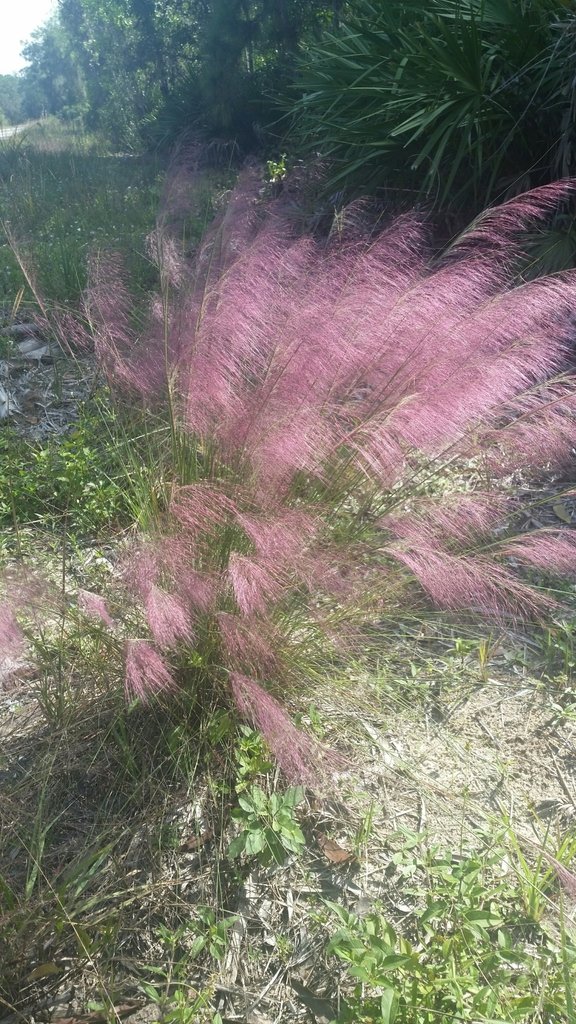Muhlenbergia sericea
Gulf Muhly
Family: Poaceae
This is a grass similar to the hairawn Muhly (Muhlenbergia capillaris) and is confused in the trade for that species often. This plant has a more erect nature and gets taller, 4-6’ when blooming.
The variety ‘White Cloud’ if often sold as a variant of M. capillaris but is actually a selection of this species.
Full sun, regular water, hardy about 5°F.
Native grasses are extremely important plants for wildlife: as nesting material for birds as well as native bees and other insects, as habitat for many organisms, and as food: adult insects eat the foliage, granivorous birds depend on many species for seeds, and most grass species are used as larval hosts for many species of butterflies and moths, especially skippers. Many bee species collect the pollen of many species of grasses. All can be used for desert tortoise enclosures.
Grasses also play an important role in the ecology of soil, and because they are monocots, they can be planted close to other species of plants (the nature of the root systems of monocots renders them less imposing on neighboring plants). They hold soil down and help prevent erosion. Many species are pioneer plants that convert disturbed soils into hospitable places for other plants.
Among Florida's Seminole People, sweetgrass was the most commonly used material for basket weaving. These baskets were often sold in tourist gift shops. In recent years, sweetgrass is becoming harder to find in South Florida. It is now only harvested during certain times of the year and in just a few locations. This grass has historical importance in South Carolina, where it has been used for basket weaving. African Americans from the Gullah tradition in the South Carolina Lowcountry still weave artistic baskets using this native grass.
Gotthilf Heinrich (Henry) Ernst Muhlenberg (1753-1815) who was American born but returned to his ancestral Germany for schooling and later returned to America. He was an ordained Lutheran minister but devoted his free time to the study of the botany. The specific epithet is the Latin word meaning "silky", in reference to this plants very soft open inflorescences. This species has been considered a variant of M. capillaris (var. filipes), and was also called Muhlenbergie filipes. There are 180 species of Muhlenbergia with the greatest number native to the southwestern United States and Mexico; there are also native species in Canada, Central and South America and in Asia.
Found in dunes and barrier islands, the native range and distribution of gulf muhly extends along the coast of North Carolina, south to Florida, and west to Texas.
A field of Gulf Muhly. Photo by Forest & Kim Starr, Wikipedia
Bloom Detail, photo by Josh Olive, iNaturalist
Mass planting of M. sericea, photo by tatejack on iNaturalist

The selection 'White Cloud' is often sold as a variant of M. capillaris, but is actually this M. sericea. Photo by Mountain States Wholesale Nursery




